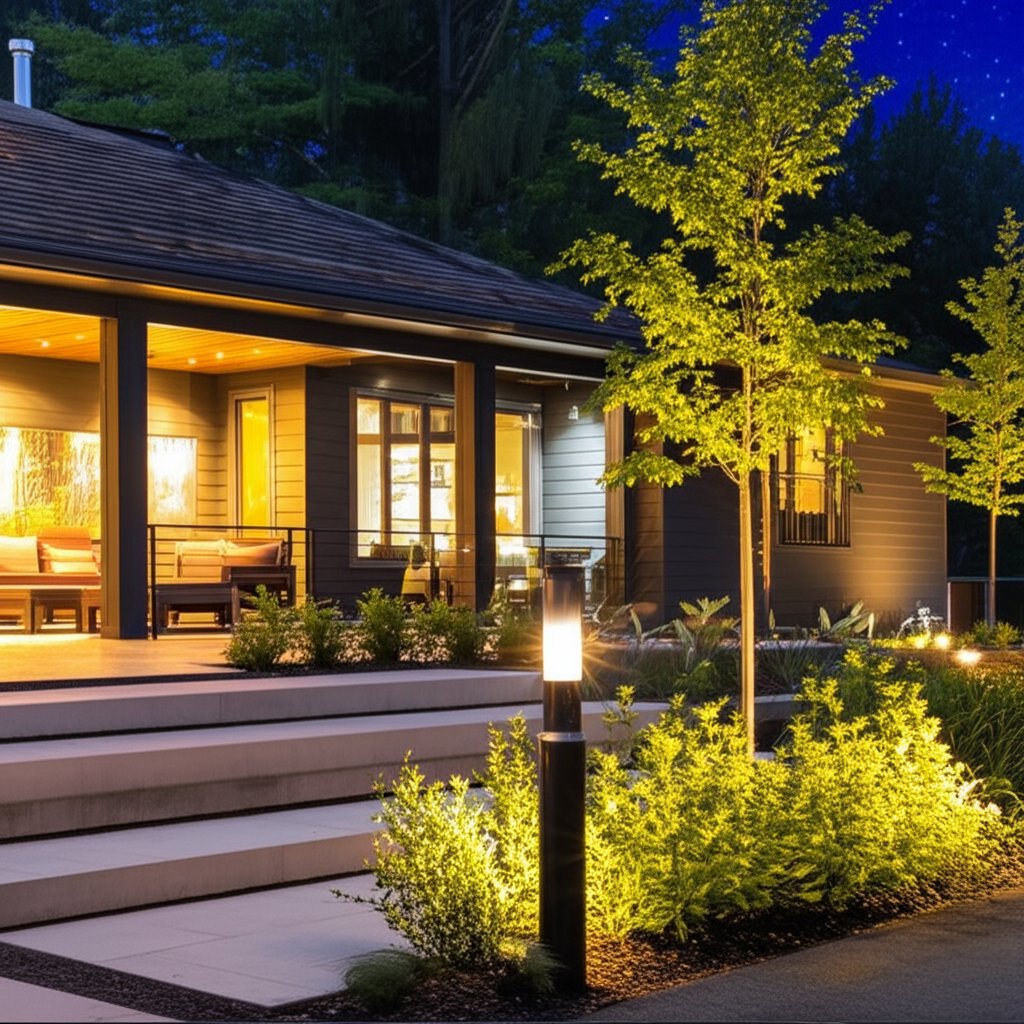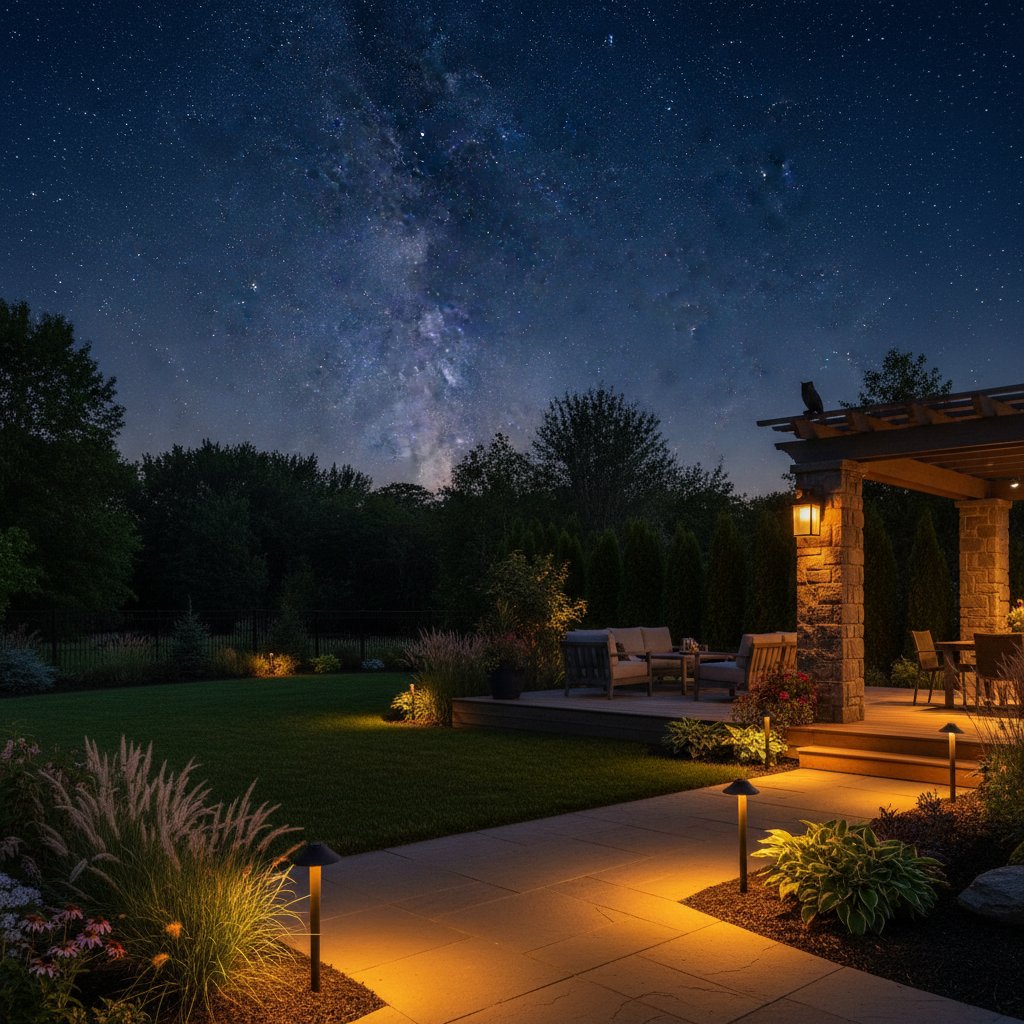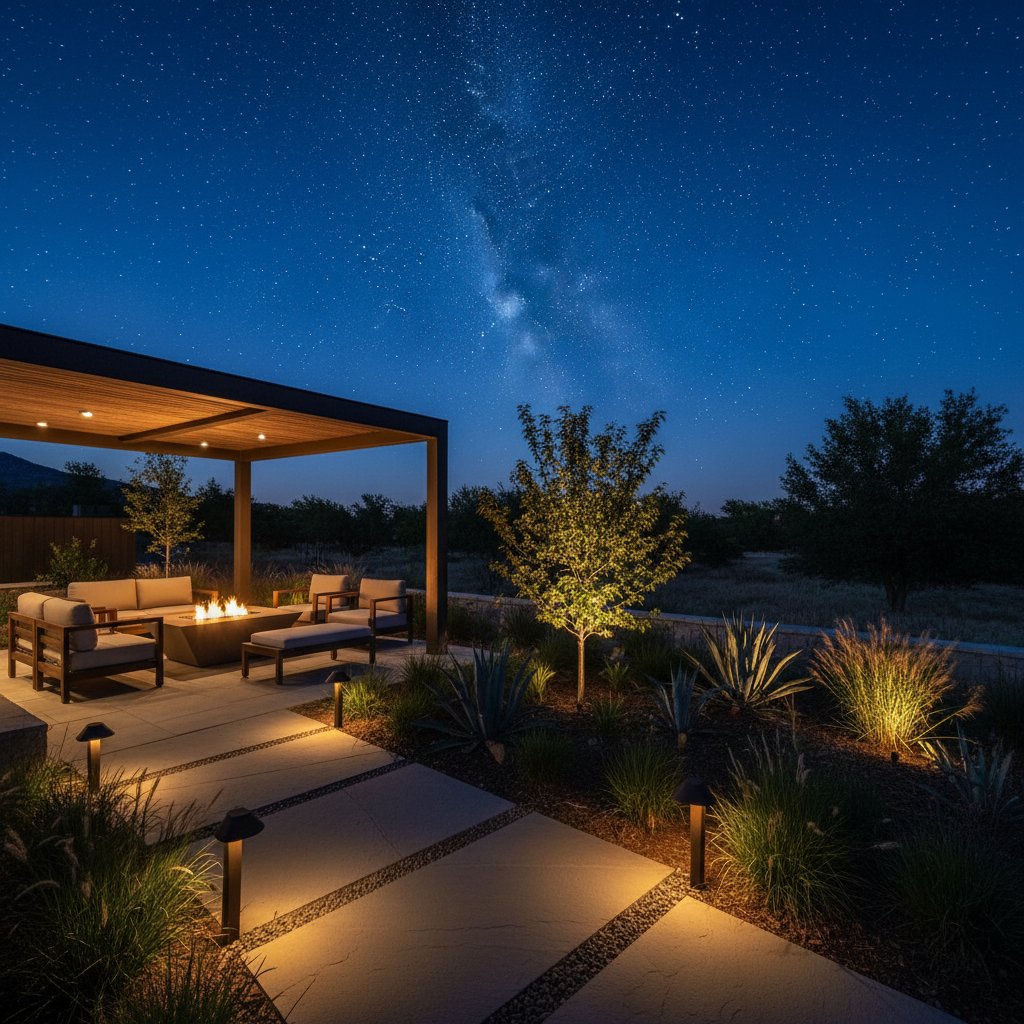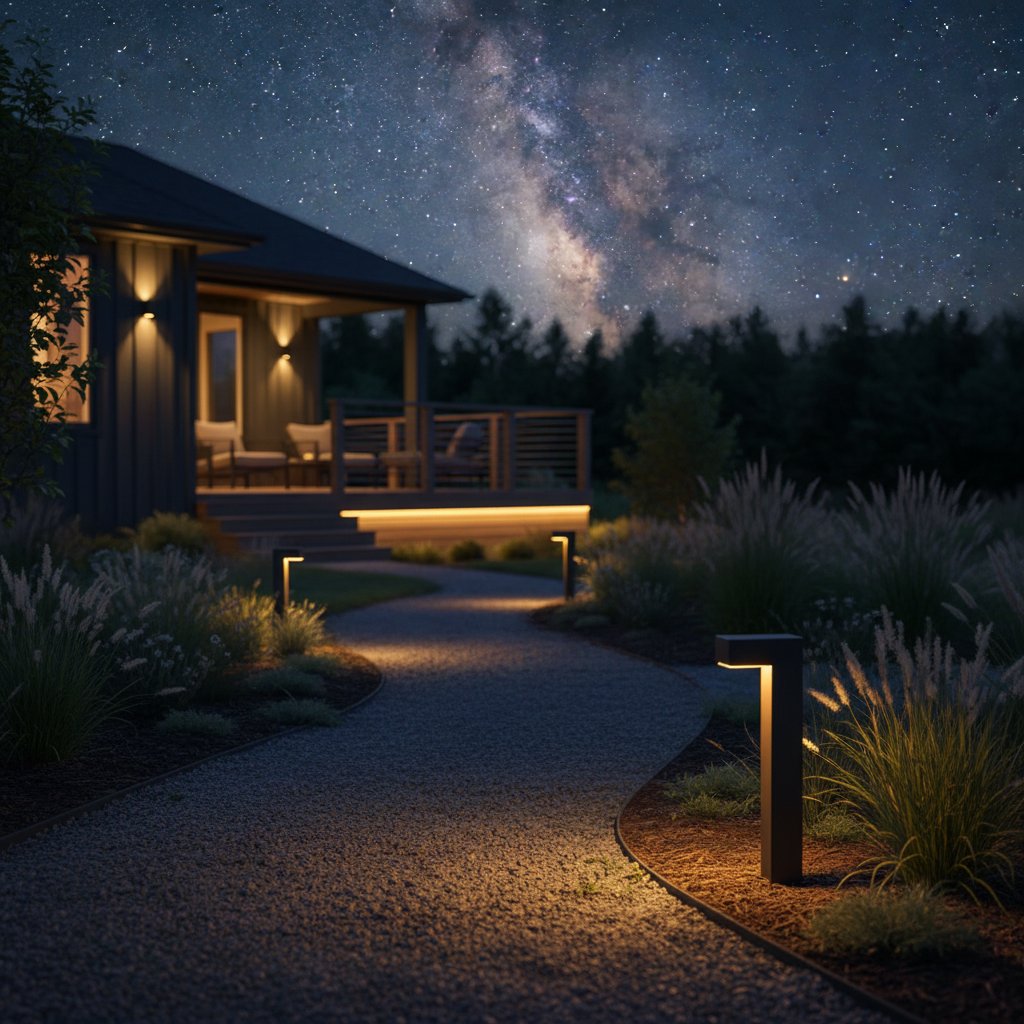Dark Sky Lighting: A Balanced Approach to Outdoor Illumination
Imagine stepping into your yard after dusk, where stars pierce a velvet sky and soft path lights guide your steps without overpowering the scene. This harmony defines dark sky lighting, a method that illuminates spaces thoughtfully while curbing light pollution. It enhances safety and aesthetics without disrupting the night's natural tranquility.
Homeowners often install excessive lighting in pursuit of security or style, yet this can diminish the very ambiance they seek. Excess light erases celestial views, alters wildlife patterns, and wastes resources. Dark sky principles restore equilibrium, delivering practical benefits alongside environmental respect.
Core Concepts of Dark Sky Lighting
Dark sky lighting counters light pollution, the unintended spread of artificial light into the atmosphere. This phenomenon disrupts ecosystems, from bird migrations to insect behaviors, and hinders human appreciation of natural darkness. Effective designs channel light precisely, preserving the night's integrity.
Key tactics include shielding light sources to prevent upward spill and calibrating intensity for necessity alone. Such measures maintain visibility on surfaces like walkways while allowing skies to remain clear. The outcome fosters a secure, inviting outdoor realm attuned to natural cycles.
Reasons to Adopt Dark Sky Practices
Light pollution veils the night sky, turning rural vistas into blurred glows and urban nights into perpetual twilight. This not only squanders electricity but also impacts biodiversity, as animals lose cues for foraging and reproduction. Homeowners face practical drawbacks too, like increased energy bills and fixtures that strain prematurely.
Implementing dark sky strategies yields layered lighting that accentuates textures and depths in landscapes. It promotes better visibility by eliminating glare, which often conceals hazards more than it reveals them. Additionally, these methods align with sustainability goals, reducing costs and ecological footprints.
Essential Design Principles
Effective dark sky design begins with assessing needs: identify areas requiring light, such as entry points or trails, and determine required intensity. Avoid illuminating broad swaths; target specific zones to maintain shadows that add dimension.
Follow these guidelines for success:
- Aim light downward exclusively. Select fixtures with visors or housings that block upward or sideways escape, ensuring illumination stays grounded.
- Select warm-toned bulbs. Opt for 2700K to 3000K Kelvin ratings, which mimic sunset hues and lessen disruption to nocturnal species.
- Control brightness levels. Employ 50 to 100 lumens per fixture for paths; test in darkness to confirm adequacy without excess.
- Incorporate automation. Install photocell timers or PIR motion detectors to activate lights only during use, extending darkness otherwise.
- Position at ground level. Favor low-profile options like 12-inch bollards over tall poles, which scatter light inefficiently.
Design Styles for Every Aesthetic
Dark sky lighting adapts seamlessly to diverse yard themes, prioritizing subtlety over spectacle. In rustic settings, employ lantern-style fixtures in aged copper or iron to complement gravel paths and wooden arbors, casting warm pools that highlight foliage.
Modern landscapes benefit from minimalist recessed LEDs or slim aluminum posts, delivering crisp downlight that underscores clean geometries. For minimalist designs, limit to three to five fixtures, spotlighting focal points like a fountain or arborvitae, allowing surrounding areas to recede into gentle obscurity.
Each style underscores quality: fixtures that integrate rather than dominate, fostering cohesion with architecture and plantings.
Selecting Compliant Fixtures
Prioritize products certified by the International Dark-Sky Association or featuring full-cutoff optics, where no light emits above the horizontal plane. These prevent skyward trespass while offering durability against weather.
Recommended options include:
- Shielded wall lanterns: Ideal for doorways, these 10- to 15-watt equivalents provide 300 lumens downward, enhancing entry security.
- Capped pathway markers: At 6 to 18 inches tall, they deliver 20- to 50-lumen glows spaced 5 to 10 feet apart for even guidance.
- Under-eave downlights: Recessed units wash walls or patios with 100-200 lumens, preserving facade lines.
- Shielded bollards: 2- to 3-foot heights suit borders, with asymmetric lenses focusing light inward.
Verify bulb invisibility from 10 feet away; this ensures a refined, non-intrusive effect.
Enhancing Safety Through Precision
Concerns about reduced security from softer lighting are common, yet evidence shows glare impairs night vision more than dimness. Overly bright sources create stark contrasts, hiding details in unlit pockets.
Targeted dark sky setups improve detection by distributing even light, illuminating treads and edges clearly. Combine constant low-level paths with sensor-triggered accents for arrivals, achieving vigilance without constant blaze.
This layered system not only deters intruders through visibility but also eases navigation, reducing accident risks on uneven terrain.
Supporting Wildlife and Ecosystems
Beyond aesthetics, dark sky lighting sustains local fauna. Many species, including amphibians and pollinators, navigate by moonlight; artificial glare disorients them, leading to exhaustion or predation.
Targeted, warm illumination minimizes attraction, allowing bats to hunt insects and owls to forage undisturbed. Simple swaps, like amber filters on existing LEDs, cut blue-spectrum output that confuses hatchlings and migrants.
Collective adoption amplifies impact: neighborhoods with compliant lighting report revived stargazing and healthier pollinator populations.
Achieving Design Unity
Cohesive lighting elevates yard appeal, weaving illumination into the overall scheme. Match fixture metals to home accents, such as matte black for contemporary siding or brass for traditional facades.
Scale appropriately: use 4-inch globes for compact patios, reserving larger 8-inch models for expansive lawns. Space elements rhythmically, like every 8 feet along borders, to guide flow without clutter.
Integrate with greenery by embedding lights amid mulch or bordering perennials, creating a seamless blend that evolves with plant growth.
Experiencing and Refining Your Setup
After installation, evaluate under varied skies: full moon versus cloudy nights reveal balance needs. Adjust angles to graze surfaces, enhancing texture without spill.
Many discover ambient levels suffice for 80 percent of evenings, reserving boosts for gatherings. Seasonal tweaks, like shortening timers in summer, optimize usage.
Routine checks ensure seals remain tight, preventing dimming from moisture.
Steps to Implement Dark Sky Lighting
Start modestly: audit current setup, targeting skyward culprits like unshielded floods. Retrofit with cutoff alternatives, aiming for 50 percent reduction in upward light.
Next, map high-traffic zones and install path guides, testing spacing for uniform coverage. Accent cherished features sparingly to spotlight without overwhelming.
This incremental shift cultivates appreciation for nuanced glows, where stars reclaim prominence and nights regain depth. The reward is a yard that nurtures both dwellers and visitors in quiet harmony.



